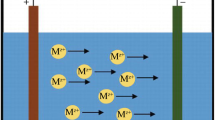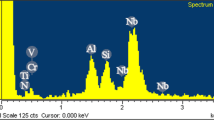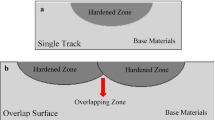Abstract
Cold-rolled steel (CRS) has been used worldwide in several industrial fields such as automobiles, electric/electronic appliances, etc. Recently, steel companies requested a higher performance coating layer, such as Zn-Mg or Al-Mg, due to its corrosion resistance. If a coating process is to be applied removal of the oxide layer from the CRS surface is necessary to improve adhesion, which is the main problem with using a coating. If the oxide layer is to be removed in a mass production process, the etching rate needs to be over 10 nm/sec (as a Si standard) because the production-line speed is 100–200 m/min. Therefore, our research developed a high-current, large-area ion-beam source to apply a high-rate etching process to the CRS before the coating process. To develop the high-rate etching source, we considered the high-density plasma generation, a high-current, large-area extraction system, and the lifetime of the ion source. The current density of the ion beam and the ion beam’s distribution over a wide range were measured by using a single-directional, electric-type Faraday cup. The high-rate ion-beam etching process depends on the ion beam’s current density and the distance from the target to the source (T.S.). We carried out a high-rate etching process of over 10 nm/sec at a T.S. distance of 300 mm.
Similar content being viewed by others
References
R. Bleeker, Galvatech’04, AIST (Chicago, ILL, Warrendale, 2004), p. 99.
N. C. Hosking, M. A. Strom, P. H. Shipway and C. D. Rudd, Corros. Sci. 49, 3669 (2007).
T. Prosek, A. Nazarov, U. Bexell, D. Thierry and J. Serak, Corros. Sci. 50, 2216 (2008).
C. Schwerdt, M. Riemer and S. Kohler, Galvatech’04, AIST (Chicago, ILL, Warrendale, 2004), p. 783.
B. S. Park and J. S. Lee, Surf. Coat. Tech. 261, 49 (2007).
J. Faber, G. H. Otzsch and Chr. Metzner, Vacuum 64,55 (2002).
B. Rauschenbach, Vacuum 69, 3 (2003).
D. M. Allen, P. Shore and R. W. Evans, Manufact. Tech. 58, 647 (2009).
J. Wilk, G. Przybylski and Z. W. Kowalski, Vacuum 63, 597 (2001).
J. Malherbe, H. Martinez and B. F. Julien, Spectrochimica Part B 64, 155 (2009).
V. S. Smentkowski, Prog. Surf. Sci. 64, 1 (2000).
Author information
Authors and Affiliations
Corresponding author
Rights and permissions
About this article
Cite this article
Kim, B.S., Choi, H.J., Lee, C.Y. et al. Study on the ion-beam etching process to remove the oxide layer in the cold-rolled steel production process. Journal of the Korean Physical Society 63, 1403–1406 (2013). https://doi.org/10.3938/jkps.63.1403
Received:
Accepted:
Published:
Issue Date:
DOI: https://doi.org/10.3938/jkps.63.1403




